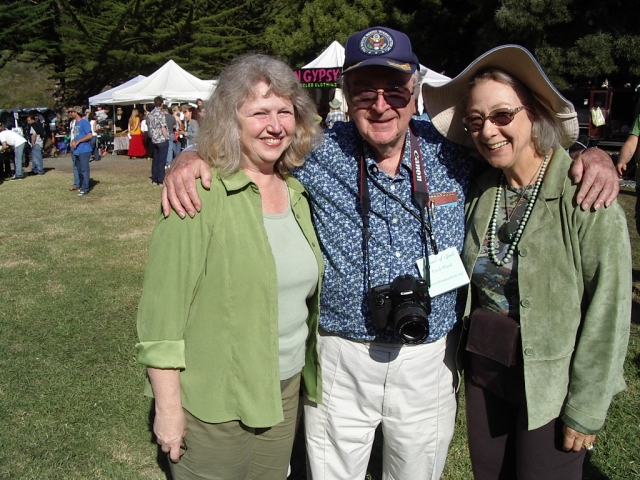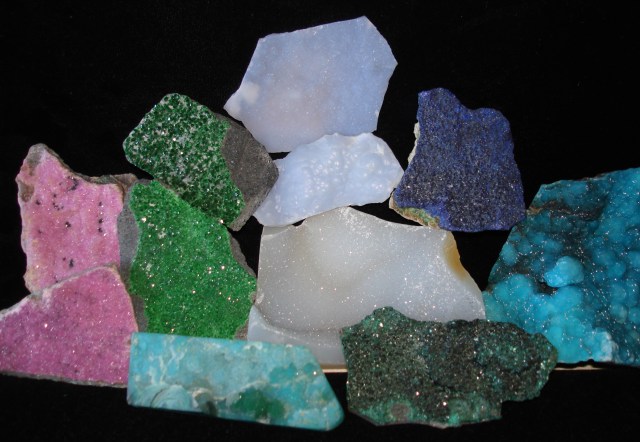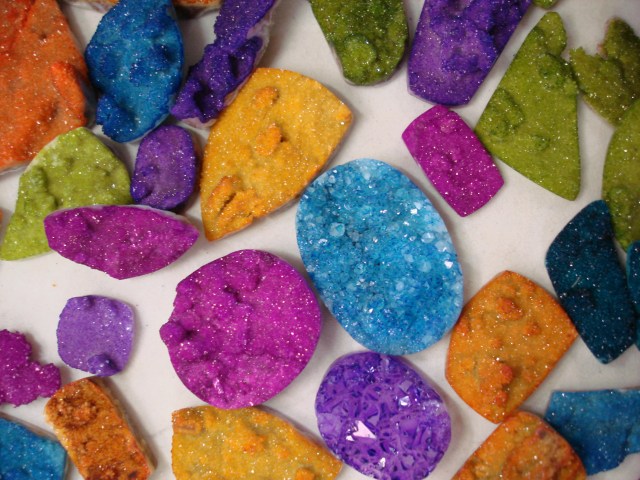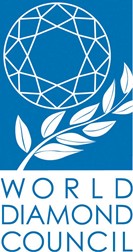
 The DCGIA chapter members heard from Patricia Syvrud, Executive Director of the World Diamond Council.
The DCGIA chapter members heard from Patricia Syvrud, Executive Director of the World Diamond Council.
The diamond industry is very unique and special, but it’s not alone in how consumers focus on its products. There are plenty other industries such as textiles which have a found a way to deal with responsible labor and sourcing issues. Responsible sourcing in the gem and jewelry trade, is important to ensure consumer RESPECT for our industry. The extensive work of the Kimberley Process (KP) provides an international process that governs the trade in rough diamonds.
The KP is called a Tri-partite organization, meaning it has three different stakeholders which work together to make it work. Countries which are voting members, Non-Voting members are Non-Government Organizations (NGO’s) such as Partnership Africa Canada, industry.
Negotiations began in 2000, implementation began in 2003 – currently, KP Chair is UAE, Vice Chair is Australia, who will be Chair in 2017. Currently The KP has 54 participants, representing 81 countries, with the European Union and its Member States counting as a single participant. KP members account for approximately 99.8% of the global production of rough diamonds. These are the members with voting privileges.
The other two legs of the tri-partite construct of the KP are made up of Observers, which means we participate in all work, tasks and meetings of the KP, can voice our opinions and add our expertise, but don’t have actual voting privileges in the KP.
The first observer group is the Civil Society Coalition (CSC), or group of NGO’s headed by an org called Partnership Africa Canada. Other members of the CSC include Green Advocates out of Liberia, the Network Movement for Justice and Development in Sierra Leone, the Center for Natural Resource Governance out of Zimbabwe and other similar organizations based in Cameroon, Guinea, and the DRC.
The second observer group is industry as represented by the WDC, the African Diamond Producers Association and Diamond Development Initiative also participate as observers.
For the member Country Participants, each country passes legislation to implement the minimum standards of the KP, but each country can legislate as they deem fit. Consequently, some countries completely control the KP through governmental channels, while other countries basically ‘outsource’ KP authority, (like the US, I’ll go more into that later), or share responsibilities like the Antwerp World Diamond Center, a quasi-governmental public/private entity that handles all KP imports and exports as well as supporting the diamond industry in Belgium.
Each country is Required to create a government validated KP Certificate which is used on any export (or re-export) of a parcel of rough diamonds.
Minimum requirement for KP certificates: origin, weight, value, exporter, importer, tamper-resistant features. Confirmation of good receipt by ultimate consignee/vendor.
Internal controls within the country printing the certificate.
The KP is specific to rough diamonds, participating member countries use the Kimberley Process to control and monitor the trade of rough diamonds. Participants certify the $30 billion annual international rough diamond trade by creating a documentary record for rough diamonds from mine to cutting and polishing. Rough diamonds must be shipped in sealed containers and exported with a Kimberley Process Certificate which certifies that the diamonds are conflict free.
KP is a voluntary system of industry self-regulation, and provides for a record system underpinned through verification by independent auditors of individual companies
and supported by internal penalties set by the industry. This helps to facilitate the full trace-ability of rough diamonds by government authorities. Participants also provide annual reports of official production, import and export data, shared and available to be audited by all participating members.
The World Diamond Council (WDC) was established to represent the diamond industry at the Kimberley Process. WDC President is Andrey Polakov, from ALROSA and Vice President is Stephane Fischler from AWDC. The WDC has committed to attending every review visit or mission. WDC members volunteer their time and cover their own costs to go on these visits which typically last for about a week.
KP in the United States is not managed as a governmental body, but is outsourced to an independent KP ‘Authority’. The US KP Authority is a not for profit trade association formed for the purpose of administering and controlling the usage of U.S. Kimberley Process certificates for the export of rough diamonds from the U.S. The US KP Authority website includes resources – a FREE Retailer Poster , as well as an Overview Presentation .
What do Industry suppliers, Vendors and jewelers need to do?
The extension of the KPCS regime into the cut and polished diamond trade is through WDC’s “System of Warranties” specifically recognized by the KPCS. This Warranty allows retailers to answer consumer inquiries about whether the diamonds are “conflict free”. It is a voluntary system of industry self-regulation, the System of Warranties requires all buyers and sellers of rough diamonds, polished diamonds and jewelry containing diamonds to make the following affirmative statement on all invoices:
Legal Express Warranty from seller to buyer (not to the end user) the polished diamonds supplied (loose or set in jewelry) were traded in a manner that is consistent with the KP.
Every member of the supply chain must realize that the story doesn’t end when a rough diamond, accompanied by a Kimberley Process Certificate, is transformed to a cut and polished diamond. It is very important that everybody in the industry understands the responsibility of supporting the Kimberley Process, compliance and corporate social responsibility provided by this kind of chain of warranties. We should look at the chain of warranty as a solid ally of the Kimberley Process. The WDC is focusing resources this year to study and strengthen the System of Warranties, so stay tuned.
Look for the KP Warranty! As a retailer or jewelry designer, every time you purchase a diamond, A KP Warranty statement should be on the invoice.
Ask for it! If you don’t see it, you need to ask for it. To ensure that consumers continue to purchase our products, we need to ensure our suppliers are doing the right thing.
Consider your suppliers! If a supplier is unable or unwilling to supply you with the KP Warranty Statement, then you should STOP doing business with them.
If the supplier says, “How can I supply it? My suppliers don’t provide it with THEIR invoices!”. Tell them THEY need to get a new supplier!
This is not a trend, this is the way the industry is moving in order to enhance the reputation of our industry to make it ethical, responsible and therefore desirable.
DCGIA thanks Patricia Syvrud for sharing with us!
Summary by Charles Marts – Secretary DCGIA
 John Koivula an Analytical Microscopist at the Gemological Institute of America shared a visual review of slides identifying common features for synthetic and treated rubies, sapphires, emeralds, diamonds, chrysoberyl, opal, spinel, quartz, jade, and corundum.
John Koivula an Analytical Microscopist at the Gemological Institute of America shared a visual review of slides identifying common features for synthetic and treated rubies, sapphires, emeralds, diamonds, chrysoberyl, opal, spinel, quartz, jade, and corundum.


 Los Angeles gem dealer with a specialty for rare gemstones, Evan Caplan shared his passion for Alexandrite with the DCGIA Members. Alexandrite one of the birthstones for June, is a very rare color-change variety of the mineral chrysoberyl. Green in daylight and Red in artificial light, color-changing Alexandrite is nature’s magic trick.
Los Angeles gem dealer with a specialty for rare gemstones, Evan Caplan shared his passion for Alexandrite with the DCGIA Members. Alexandrite one of the birthstones for June, is a very rare color-change variety of the mineral chrysoberyl. Green in daylight and Red in artificial light, color-changing Alexandrite is nature’s magic trick.

 The DCGIA chapter members heard from Patricia Syvrud, Executive Director of the World Diamond Council.
The DCGIA chapter members heard from Patricia Syvrud, Executive Director of the World Diamond Council. RIP – July 16, 1935 – July 19, 2016
RIP – July 16, 1935 – July 19, 2016 
 Precious Heirlooms – A voice from the past & possibly into the future…
Precious Heirlooms – A voice from the past & possibly into the future…






 Administrative and Kimberley Process Support Specialist
Administrative and Kimberley Process Support Specialist




